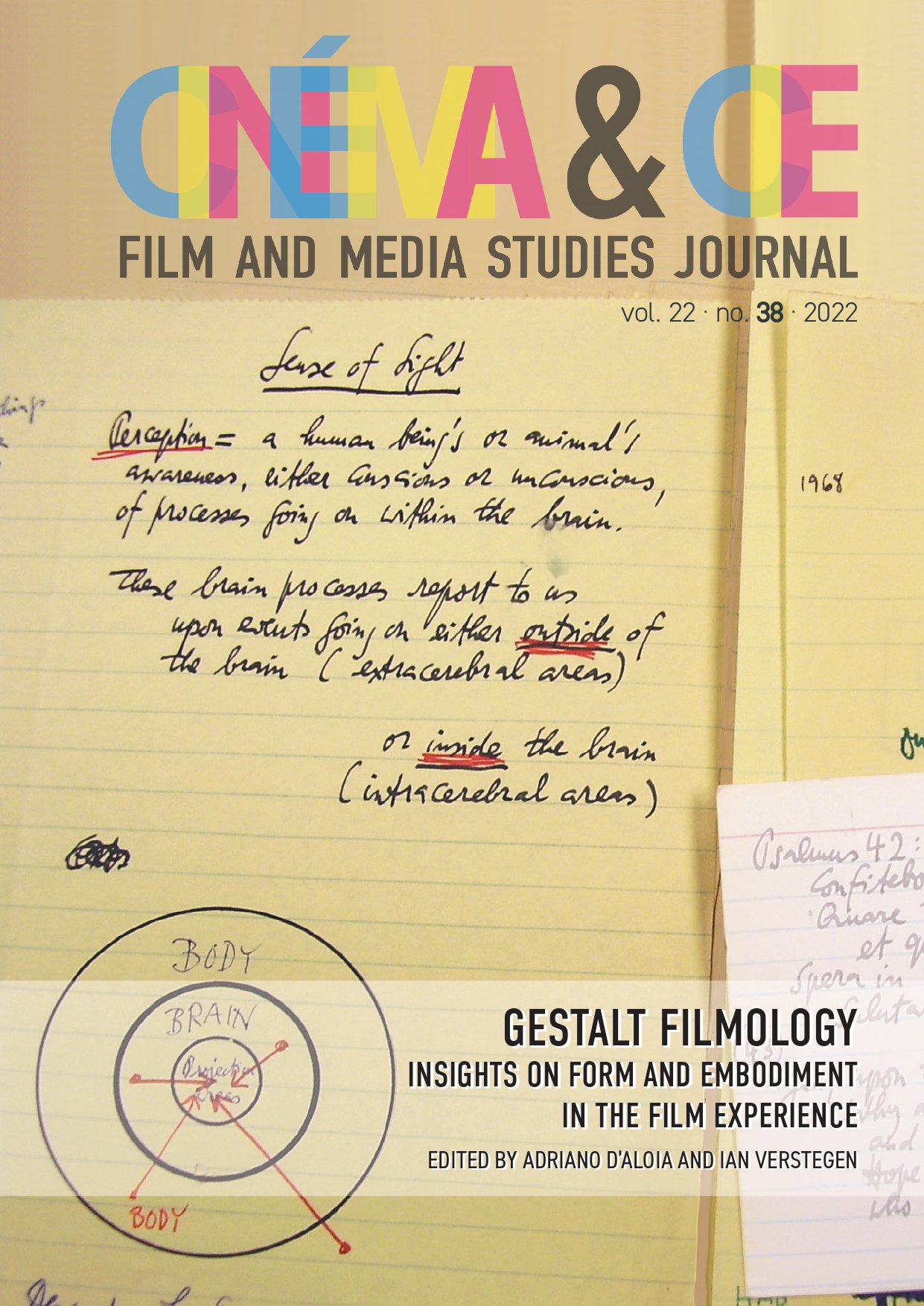Points of Anchorage: Exo-Centric Images and the Perceptual Relativity of Camera Movement
DOI:
https://doi.org/10.54103/2036-461X/16883Keywords:
Camera movement, Phenomenology, Exo-centric images, Relative movement, Forbidden movementsAbstract
This essay analyzes a unique filmmaking technique to highlight the fact that camera movement is fundamentally an optical illusion based on a misinterpretation of visual cues. The unique technique in question is what I have called the ‘exo-centric image’, namely an image produced by a camera attached to the body of an actor which, paradoxically, generates the impression of an immobile body in a moving world. Through an analysis of this peculiar technique, I make claims about the illusory nature of camera movement in general. In so doing, this essay concludes that the vocabulary we use to describe camera movement keeps us from seeing some of the more eccentric aspects of the effect we call camera movement.
Downloads
Published
How to Cite
Issue
Section
License
Copyright (c) 2022 Philippe Bédard

This work is licensed under a Creative Commons Attribution 4.0 International License.





